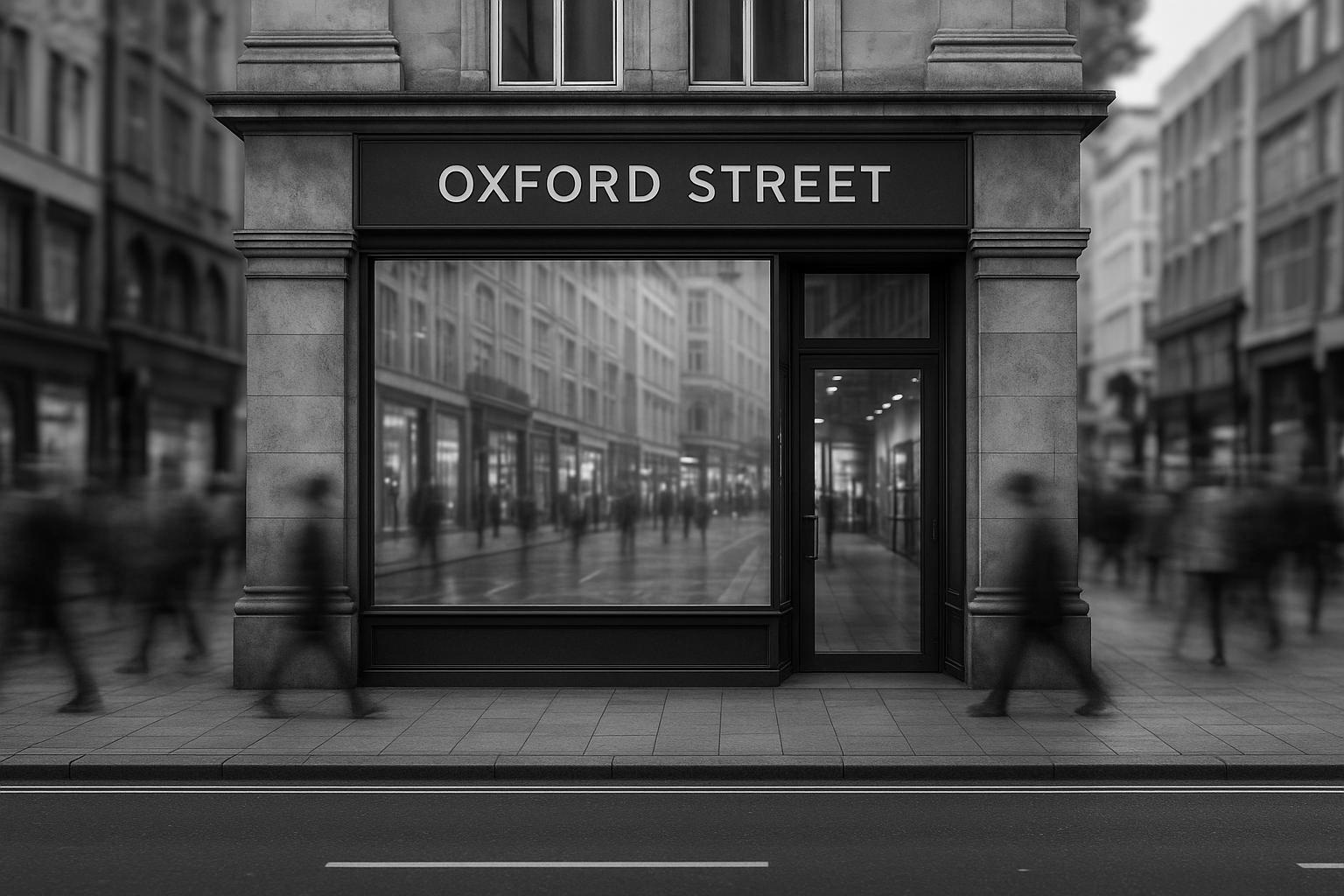Savills’ latest data shows a sharp revival in Central London retail investment, with transactions totalling about £1.6bn in the first half of 2025 — a rise of roughly 130% year‑on‑year and about 101% above the ten‑year H1 average. The property adviser says the momentum could carry full‑year investment beyond £2bn, which would be the strongest annual total since 2018. The firm highlights a string of large transactions and strong institutional demand as the immediate drivers behind the uplift.
Activity across core West End streets was a key component of the surge. Savills reports that Q2 volumes were broadly in line with Q1, leaving West End investment at around £495m for H1 — about 19% higher than the same period in 2024 — and that a number of second‑half completions are expected to lift full‑year totals comfortably above last year’s £523m. The firm points to a mixture of on‑market and off‑market deals that have concentrated capital into prime high‑street assets.
Charlie Stoneham, associate director for Central London investment at Savills, said in the firm’s H1 release that sovereign wealth funds and private equity are increasingly active in the sector, attracted to “long, landlord‑favourable lease structures, resilient footfall, and relatively low capital expenditure requirements.” He added that a recent uptick in owner‑occupier acquisitions indicates a change in sentiment, with occupiers committing to long‑term presence in prime locations. Marie Hickey, director of research at Savills, told reporters that the planned pedestrianisation of Oxford Street and the quality of recent development on the street are strengthening its appeal to both investors and occupiers.
The pattern of large, institutional deals was already evident in Savills’ Q1 Market in Minutes, which recorded a sharp uplift in the opening quarter — roughly £1.21bn of retail transactions across four significant deals — and noted yield compression on certain prime streets. That quarter‑by‑quarter evidence helps explain how occupational improvements, modest prime rental uplifts and improving footfall metrics fed into investor appetite in H1.
Independent market commentary and competitors’ reports broadly corroborate this assessment. CBRE’s H1 overview of the Central London retail market points to similar themes: institutional capital focusing on prime retail, improving occupational fundamentals and notable recent transactions that are tightening pricing dynamics across Oxford Street and other West End locations. CoStar’s market coverage also highlights institutional buyers, off‑market activity and renewed confidence in prime high‑street assets as central to the H1 surge. At the same time, these sources note that sustained momentum will depend on the pipeline of deals completing in the second half of the year and on broader macroeconomic conditions.
The prospects for Oxford Street in particular have been a focal point for investors. The Greater London Authority’s consultation findings showed strong public and business support for the mayoral plans to transform Oxford Street — about seven in ten respondents backed the regeneration proposals and two‑thirds supported pedestrianisation — which, according to Savills’ research team, is an added catalyst for demand. Savills has pointed to the proposed pedestrianisation (envisaged in planning terms for completion phases by the end of 2028) and recent large‑scale developments as elements that are lifting long‑term confidence in the street.
Looking ahead, Savills’ projection that 2025 could top £2bn in retail investment rests on several moving parts: the completion of high‑value transactions in H2, continued interest from institutional and private capital, and the delivery of occupational improvements on the ground. While the H1 numbers mark a marked recovery in flows to prime Central London retail, commentators caution that the market’s trajectory will remain sensitive to the pace of deal completions and the wider economic backdrop. For now, though, prime high street stock appears to have re‑emerged as a focal point for large investors after a period of relative caution.
📌 Reference Map:
Reference Map:
- Paragraph 1 – [1], [4], [6]
- Paragraph 2 – [1], [4], [2]
- Paragraph 3 – [1], [4]
- Paragraph 4 – [3]
- Paragraph 5 – [5], [6]
- Paragraph 6 – [7], [1]
- Paragraph 7 – [1], [4], [5]
Source: Noah Wire Services
